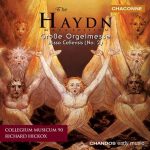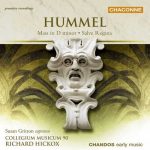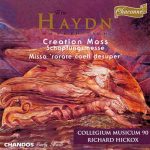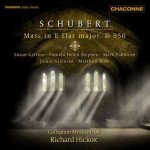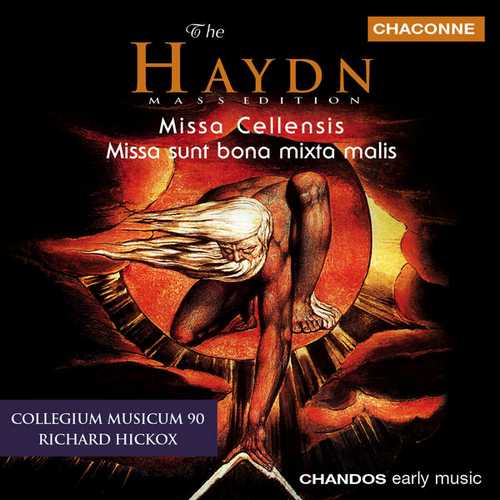

Composer: Franz Joseph Haydn
Performer: Susan Gritton, Louise Winter, Mark Padmore, Ian Watson, Stephen Varcoe
Orchestra: Collegium Musicum 90
Conductor: Richard Hickox
Format: FLAC (tracks)
Label: Chandos
Catalogue: CHAN0667
Release: 2001
Size: 873 MB
Recovery: +3%
Scan: yes
Mass, Hob. XXII: 5 in C major ‘Cäcilienmesse’
01. Kyrie: Kyrie eleison
02. Kyrie: Christe eleison
03. Kyrie: Kyrie eleison
04. Gloria: Gloria in excelsis Deo
05. Gloria: Laudamus te
06. Gloria: Gratias agimus tibi
07. Gloria: Domine Deus, Rex coelestis
08. Gloria: Qui tollis peccata mundi
09. Gloria: Quoniam tu solus sanctus
10. Gloria: Cum Sancto Spiritu
11. Gloria: In gloria Dei Patris
12. Credo: Credo in unum Deum
13. Credo: Et incarnatus est
14. Credo: Et resurrexit tertia dei
15. Sanctus
16. Benedictus
17. Agnus Dei: Agnus
18. Agnus Dei: Dona nobis pacem
Mass No. 1b in D minor, Hob.XXII:2
19. Kyrie
20. Gloria
This is the only current recording of the fragmentary Missa sunt bona mixta malis, consisting only of a brief setting of the Kyrie followed by a more expansive setting of the Gloria, which is cut off after the ‘Gratias agimus tibi’. Improbably, the score was discovered as recently as 1983 in a farmhouse in the north of Ireland. Dating from 1768, it’s tantalising having only a fragment when the contrapuntal writing presents Haydn at his most striking in this period. It makes a fascinating supplement to Hickox’s superb account of the longest setting of the liturgy that Haydn ever composed.
The title of the Missa cellensis – referring to the small Austrian town of Mariazell – is misleading in two ways. It’s obviously so when there’s another, later Mass also entitled Cellensis, but equally because it seems highly unlikely that so ambitious a work as this was ever designed for such a place as Mariazell: it was more probably written for a grand occasion in Vienna. So it would surely be less confusing to return to the usual title for this work, ‘St Cecilia Mass’.
This is a ‘cantata-mass’ very different from Haydn’s usual settings which involve a single movement for each of the six sections of the liturgy.
Here instead, the liturgy is divided into 18 separate movements. Hickox’s new version gains over the fine Preston issue from the late 1970s in weight and warmth of expression, helped by the Chandos recording which, while warm, allows ample detail in the many splendid contrapuntal passages. The choir’s sopranos are amply bright and boyish and achieve a crisp ensemble. The soloists make an outstanding, responsive team.
